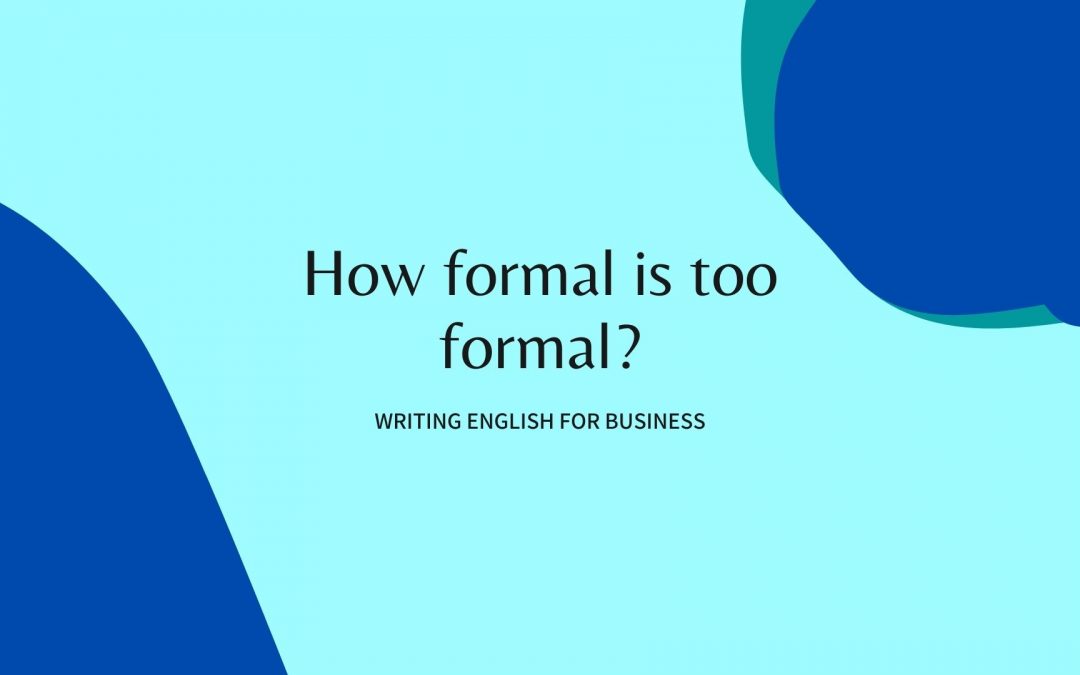How formal is too formal?
In my last blog, I explained the classic format taught to me as a young dinosaur for writing “transactional” mail. We learned to break it down into three parts: first, the reason for writing, followed by details and finally, what you want your correspondent to do about the situation. With slight adjustments, this plan works well for most situations, and these days you don’t need to go too crazy about grammatical details and minor spelling mistakes: let English teachers worry about them. The only problem you have left now is the question of style. You want to be friendly but professional, polite but assertive, and you’re trying to do this in a foreign language, so it’s tricky. For that reason, here is the best advice I can give on business writing style from a native perspective.
First Impressions
The first thing to remember is that your average work email is not the same as the formal letters you wrote at school and a little bit of human warmth is now allowed. It’s still advisable to use Dear… plus surname(s) for your first contact (introduce them with Ms if it’s a woman, Mr for men), but you’ll usually find that your new native friend switches to first names in their reply and replaces your Dear… with a more ergonomic Hi…. At this point, unless you have a reason for keeping your distance you can relax and follow their lead.
Neutral Style
A good reference for your email style is the way you speak English in a meeting. This means that contractions (like don’t) are OK, simple vocabulary is used to explain things and long sentences connected by posh linkers like “notwithstanding” are rarely seen as cool. Phrasal verbs are common (carry out, etc.) and even quite colloquial expressions (like taking the Mickey) are used to give an impression of straightforward honesty. We reserve the more formal language for when relationships break down and we want to impress or intimidate.
The Magic Words
One area where I think the old rules still apply with native speakers is in the use of three words that are battered into most of us as kids: please, sorry and thanks. The first can be avoided if you make your request a question (Could you…?) but if you give a direct order, a quick please is usually advisable, even if you’re angry. Natives also tend to be generous with their please and thanks and will expect you to do the same. Generally, if you think one of these words might be needed, you’re right, and their omission could have serious consequences for your relationship.
Closing
The classic closer is still Best regards, (followed by full name for a first contact). Lazy natives have been working to reduce this for years and many use one of just Best, or Regards, these days. Cutting the phrase to the letters BR, is a step too far for my liking, and I’ll be talking more about abbreviations and other danger areas for writing in my next blog in two weeks.


